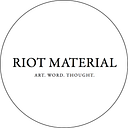at Hauser & Wirth, Los Angeles
Reviewed by Genie Davis
That the late Jack Whitten was an artist of great depth and perception is a given. But the truly fascinating thing, the haunting, resonant thing about the man’s work is its sense of timelessness and immortality. His mastery may not have been fully recognized in life, but with concurrent shows at the Baltimore Museum of Art and here in Los Angeles at Hauser & Wirth, Whitten is finally getting a bit of his due, and the timing scarcely matters. Physically he’s gone, but spiritually, his presence is stronger than ever.
© The Estate of Jack Whitten. Courtesy The Estate of Jack Whitten and Hauser & Wirth. Photo: John Berens
Self Portrait with Satellites, the Hauser & Wirth exhibition closing this weekend, is a profoundly beautiful, elegiac show, the elegy created by Whitten’s own hand and eye. Inspired perhaps by his deep interest in philosophy and quantum mechanics, the lines in his images act as a series of waves and particles, capturing the duality of both, something science itself has often failed to capture. But Whitten masterfully brings it to life with works such as Quantum Wall VIII (For Arshile Gorky, My First Love In Painting), the last of his Quantum Wall series and the last-ever work Whitten made before his death.
A multicolored mosaic-like image, if one examines this work closely enough, it appears as if it contained a wave of light among many particles. Both a metaphorical catalyst for the unseen world, and a literal one, this particular work is emblematic of the wide range of abstract creations that Whitten shifted through over his extensive career. It’s filled with motion, hidden meaning, revealed meaning, and a powerful sense of self.
The exhibition combines Whitten’s self-portraits, inspirational images dedicated to those who inspired them, and a rough illumination of the artist’s own preoccupations and perceptions. The works are often dream-like, a testament to what it is to be human in the soul, the gut, and the eye. Our limited capabilities, our fragile existences are exposed and somehow made divine in Whitten’s art. Not to put too fine a point on it, this show at Hauser & Wirth offers a rich insight into the late artist’s art and soul — and our own souls.
It may be this almost cosmic sense of the universal, or perhaps it’s his unique use of medium that feels so rich, resonant, and mysterious. Viewers may, at first glance, perceive that the mosaic-like works as made from mosaics, or beads of glass. But in reality, the material the artist uses is acrylic paint. Paint poured thick, cut, and then glued to the canvas. Strange, meticulous, a bit surreal, the individual paint pieces are dissected, re-set, like gemstones cut to fit a jeweler’s mold.
© The Estate of Jack Whitten. Courtesy The Estate of Jack Whitten and Hauser & Wirth. Photo: John Berens
The end-result is something that shines, glitters, moves. Again there is the sense of transmittal, of that wave-like pulling-in for the viewer. Whitten is emotionally moving us, visually compelling us to look into, behind, and within the uneven surface of the paint.
It’s all about layers, and beneath those layers, a sensation of light. It is impossible not to come back to the ideas of waves and particles that the artist was fascinated by. With New York Deli: For Wayne Thiebaud, Whitten’s detailed, shimmery work follows a waved field. The piece is abstract, but you get the sense of New York in it, references to the geometry of buildings and streets, the curves of the Brooklyn Bridge, the pattern of skyscraper windows and subway tiles, of patches of sky and alley detritus, all only half seen in a dream, or even imagined. These are puzzle pieces of meaning and physical bits of paint, linked together to form art. There is a similar sense of interlocking pieces drawn together in The Ginsberg Mandala: For Allen Ginsberg, an earlier work that utilizes a pattern of red circles within a white field. The work evokes not just a mandala, but a dream of a mandala, a dictionary definition of the form writ large: “a geometric figure representing the universe in Hindu and Buddhist symbolism…a symbol in a dream representing the dreamer’s search for completeness and self-unity.” Whether Whitten read, studied, and absorbed this idea factually or intrinsically, it does not matter. It is there — there in the geometry of it, the flat thick cut paint pieces, the preciseness of work that nonetheless appears to be floating in space.
© The Estate of Jack Whitten. Courtesy The Estate of Jack Whitten and Hauser & Wirth. Photo: John Berens
To read the rest of this review, go to Riot Material magazine: https://www.riotmaterial.com/jack-whitten-self-portrait-with-satellites/
And please follow us on Facebook: https://www.facebook.com/riotmaterial/
